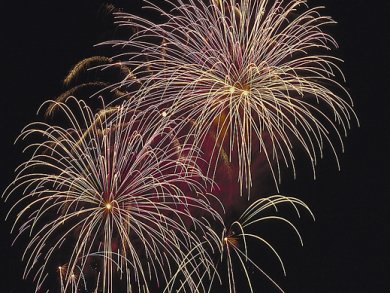On the eve of a new year, when the champagne is flowing freely, impress your friends with these chemistry-based facts about the drink in your hand:
► Champagne is best poured down the side of a glass held at a 45° angle, like serving beer. This results in less foaming and turbulence, both of which increase the rate of CO2 loss. Reducing the rate of CO2 loss helps preserve the sparkle (at least as long as the champagne lasts). Bubble Trouble
► Champagne should always be served chilled. The ideal temperature is 6 – 8 °C (43 – 46 °F). At higher temperatures, more CO2 is lost during pouring, while at lower temperatures, the aroma fails to develop and part of the pleasure is lost. Sparkling Wine, Champagne & Co – Part 2
► Champagne bubbles can not form spontaneously under homogeneous conditions. They require a surface with imperfections such as dust particles or deliberate roughening of the glass to allow the initial microbubble to form. Sparkling Wine, Champagne & Co – Part 3
► The highly prized, long-enduring tickling of the tongue that champagne is known for is only in part due to the bursting of CO2 bubbles on the coarse surface of the tongue. In addition, soluble CO2 penetrates into the tongue’s deeper tissue layers. There, with the help of carboanhydrase, it is converted to carbonic acid and its dissociation products. These activate a receptor that initiates a nerve impulse, and this is processed into the tickling sensation. Sparkling Wine, Champagne & Co – Part 3

► The white fog or smoke that appears as a champagne bottle is opened is condensed water from the atmosphere. It results from the pressure/volume work associated with the change in pressure between the sealed bottle (approx. 5 atm) and the open one. The associated cooling is sufficient to condense or even freeze water from the surroundings. Sparkling Wine, Champagne & Co – Part 2
► Champagne is required to spend at least fifteen months aging on its lees after the initial three-week fermentation period. For vintage Champagne this is a full three years. As a result of this long aging period, the cellars of Champagne producers are currently estimated to house 1.5 billion bottles. Sparkling Wine, Champagne & Co – Part 1
Image: © Hinnerk Rümenapf, Hamburg, http://ruemenapf.de




